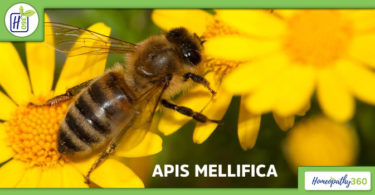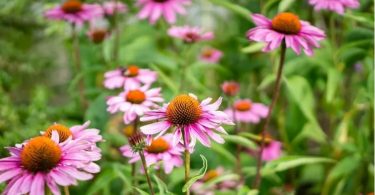Abstract: The ‘Cucurbitaceae’ family is one of the important sources of food. Here we are going to discuss some of the common characteristics and the common remedies prepared from the same group.
Introduction
There is a GROUPING TENDENCY in homeopathy to study families of remedies. This is in contrast with the past, when mostly single remedies were studied often without any knowledge about the origin of the remedy. As we know that the number of homeopathic medicines is so vast that at a time, the recognition and prescription becomes very difficult. Therefore, group study can make the work easy and we can easily prescribe the medicine at a time.
One important thing about the family study is particular group of medicines having common patho-physiological actions and an active principle is helpful to select the medicine. Another important thing which we should know is the morphological structure of a plant of a particular family which will be helpful for the standardization of the drug. Therefore, let us discuss about one of such families — the ‘Cucurbitaceae’ family.
The family botanically is a highly specialized family of medium sized and mainly climbing plants. It is one of the important sources of food. The total number of genera is 90 and number of species is about 700. This family is well represented in the moist and moderate dry tropics, particularly the rainy forests areas of South America and wood, grass and bush land areas of Africa. Climbing plants have palmately veined leaves and unisexual yellowish flowers. They climb by means of spiraling tendrils. Some are annual, most are perennial herbs and a few are softly woody lianas. The swollen tuberous rootstock can be subterranean or wholly or partly superficial.
The wild ‘cucurbitaceae’ taste mostly bitter due to the presence of cucurbitacinen. In the seeds of many cucurbitaceae is found an amino acid ‘cirulline’ and the seeds of the cucurbita pepo are poisonous for eelworms and flat worms but eatable for man and some wild bitter species, in the past were used as purgatives. The watermelon, cucumber, pumpkin, courgette and gherkin are important sources of food and water. The characteristic features are extremely rapid growth, dependence on heat and storage of water.
These are the some common characteristic features of cucurbitaceae family and here are some important remedies which are prepared from cucurbitaceae family:
Important Remedies
} Bryonia alba (wild hops)
} Colocynthis (bitter apple)
} Cephalandra indica (ivy gourd)
} Cucurbita citrullus (water melon)
} Cucurbita pepo (pumpkin)
} Elaterium (squirting cucumber)
} Luffa bindal (ghosalata)
} Luffa operculata (vegetable schwann)
} Momordica balsamina (balsmam apple)
Doctrine of Signature
Here, we are not going in much detail about what is the doctrine of signature. In the nutshell, it is nothing but one of the expressions of the perfinity principle. In the cucurbitaceae family, we see that the more fruits we pick, the more they will grow. This is seen in mentals as productivity. The cucurbitaceae are very productive and the huge fruits and roots represent the storage for future need. Cucurbitaceae are willing to share their savings with others, and can look at it as an investment for the future, when their generosity or hard work will be rewarded.
The harder their exterior, the longer they can be put aside for times of hardship and shortage, like pumpkins that are stored for winters. Just like, they store the nutritional value and sweetness of life for future usage; they store the bitterness of their deception and indignation.
We see plants that grow over large distances, either climbing on other plants or just crawling over the soil. They need to be supported, and in exchange, they offer themselves to others. It is remarkable that these plants, which grow the largest fruits on the earth so abundantly and crawl over the soil for many meters, do not root themselves at more places. They receive all the juice that is stored in their fruits from one root. They travel out into the world, do not settle, but keep in contact with and stay dependent on their original root, their home. Desire to travel and homesickness.
Let us look at some medicinal properties of this family. All medicinal substances obtained from this order act prominently on the alimentary tract. They seem to have in common a cathartic action. They probably act paralyzing the vasomotor nerves of the abdomen.
Theme
Produces inflammation of joints, sciatica, irritability, indifference, restlessness, sadness and weakness of joints.
Miasm
Psora and sycosis
Sphere of action
Predominantly acts on the alimentary canal. They also act on the mind, serous membranes, gastro intestinal tract, synovial membranes, joints, nerves and female genital organs.
Pathophysiological action
The action on serous membranes and synovial membranes lead to effusion or exudation. Acting on the nerves, they produces neuralgia — sciatica and other neuralgic affections.
Common Characteristics
All act prominently on the alimentary tract
They seem to have in common, a cathartic action. They probably act paralysingly on the vasomotor nerves of the abdomen producing gripping pains, flatulence and gushing watery diarrhoea.
} Elaterium
} Momordica charantia
} Momordica balsamina
} Colocynthis
} Bryonia
} Luffa amara
} Trychosanthes
} Colocynthinum
Action on nerves
Sciatic nerve — Sciatica with shooting neuralgic pains
} Colocynthis
} Laterium
} Momordica balsamina
} Momordica charantia
} Luffa actangula
Vasomotor nerves of abdomen — producing colic, dysmenorrhoea etc.
} Colocynthis
} Bryonia
} Elaterium
} Citrullus
} Luffa bindal
} Momordica charantia
} Momordica balsamina
Action on liver
Enlargement of liver with tenderness and pain in right hypochondrium; jaundice
} Bryonia
} Luffa amara
} Luffa bindal
} Colocynthis
} Colocynthinum
} Trychosanthes
} Elaterium
Action on serous membranes
Producing inflammation and effusion. Shifting pains < by motion > warm application.
} Bryonia
} Colocynth
} Colocynthinum
} Elaterium
} Citrullus
Antihelminthic action — have been used as curative for worms
} Cucurbita pepo
} Cucurbita citrullus
} Cucurbita maxima
} Momordica foetida
Anti-febrile action
Malarial fevers, intermitting and remitting fevers, gastric, bilious and typhoid fevers
} Bryonia
} Luffa Amara
} Luffa Bindal
} Elaterium
Mental irritability
Complaints from anger, vexation and mortification
} Colocynthis
} Colocynthinum
} Bryonia
} Cephalandra indica
General Modalities
Aggravation: Anger or indignation, emotions
Amelioration: Pressure, prolonged perspiration
Source: HomeoBuzz





